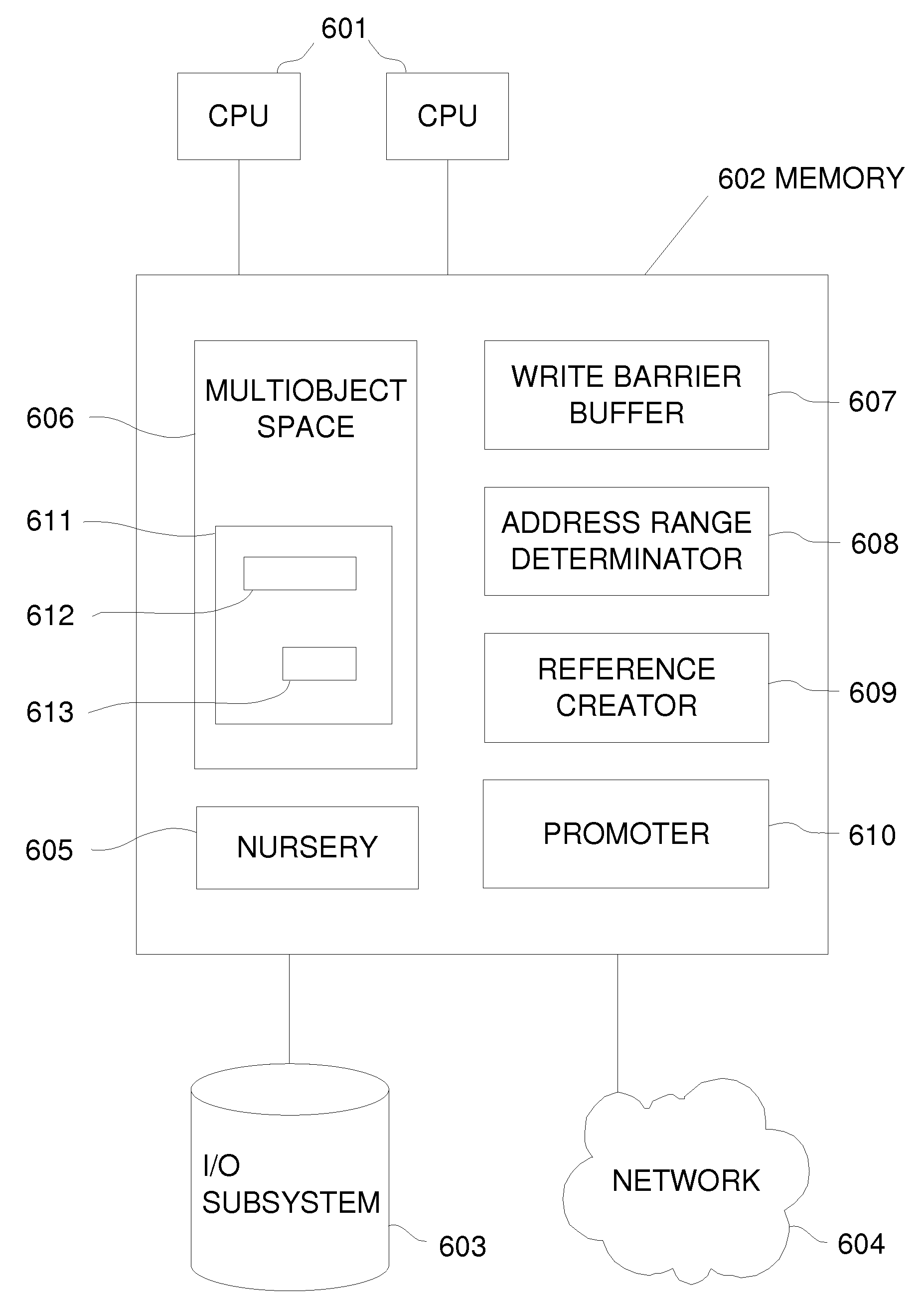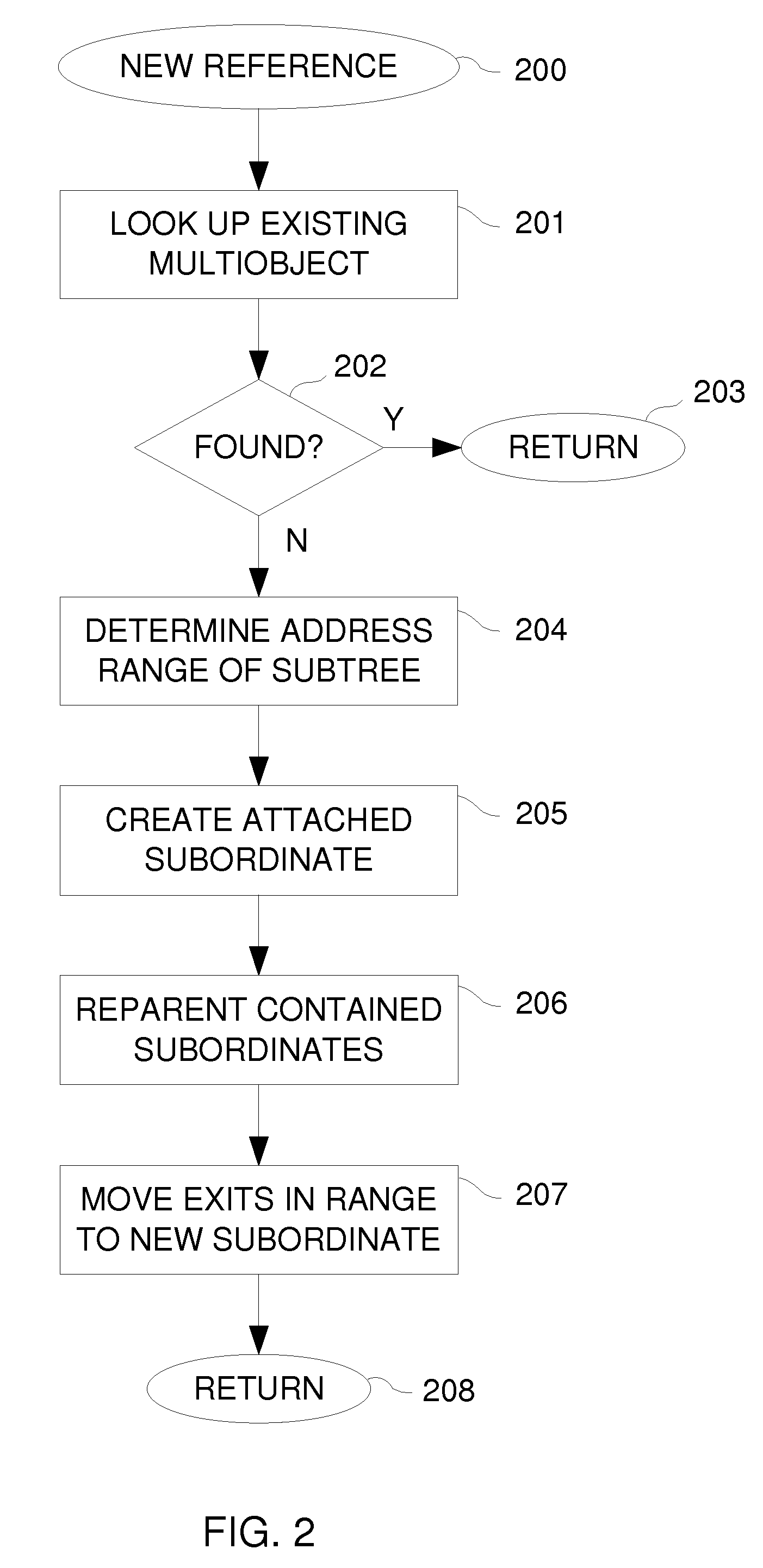Subordinate Multiobjects
a multiobject and sub-object technology, applied in the field of garbage collection techniques for automatic memory management, can solve problems such as the inability to reach parts of the existing object graph
- Summary
- Abstract
- Description
- Claims
- Application Information
AI Technical Summary
Benefits of technology
Problems solved by technology
Method used
Image
Examples
Embodiment Construction
[0020]In the present disclosure, a multiobject is defined as a (semi-)linearized graph of objects where the objects have been stored in a predefined (specific) order. When a multiobject is created, the graph is preferably a tree (that is, only the root of the multiobject may have more than one reference). However, as new references are created to the multiobject, more than one object contained therein may have more than one reference.
[0021]Furthermore, it is anticipated that in some future embodiments more liberal multiobject structures may be desirable even when creating a multiobject. As an example of a possible relaxation, objects within the multiobject could be allowed to have more than one reference from within the same multiobject, but only the root (or root of a subordinate multiobject) could have more than one reference from outside the multiobject.
[0022]While the present invention may be applicable also to such relaxed multiobjects, in the rest of this disclosure multiobjec...
PUM
 Login to View More
Login to View More Abstract
Description
Claims
Application Information
 Login to View More
Login to View More - R&D
- Intellectual Property
- Life Sciences
- Materials
- Tech Scout
- Unparalleled Data Quality
- Higher Quality Content
- 60% Fewer Hallucinations
Browse by: Latest US Patents, China's latest patents, Technical Efficacy Thesaurus, Application Domain, Technology Topic, Popular Technical Reports.
© 2025 PatSnap. All rights reserved.Legal|Privacy policy|Modern Slavery Act Transparency Statement|Sitemap|About US| Contact US: help@patsnap.com



